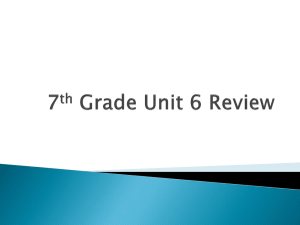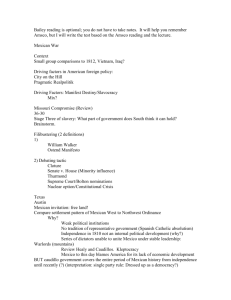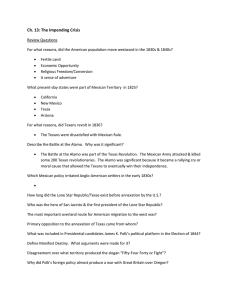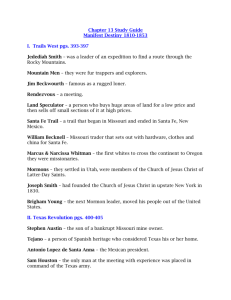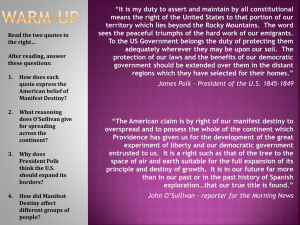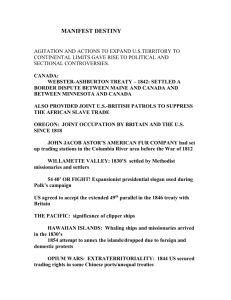Manifest Destiny PowerPoint
advertisement
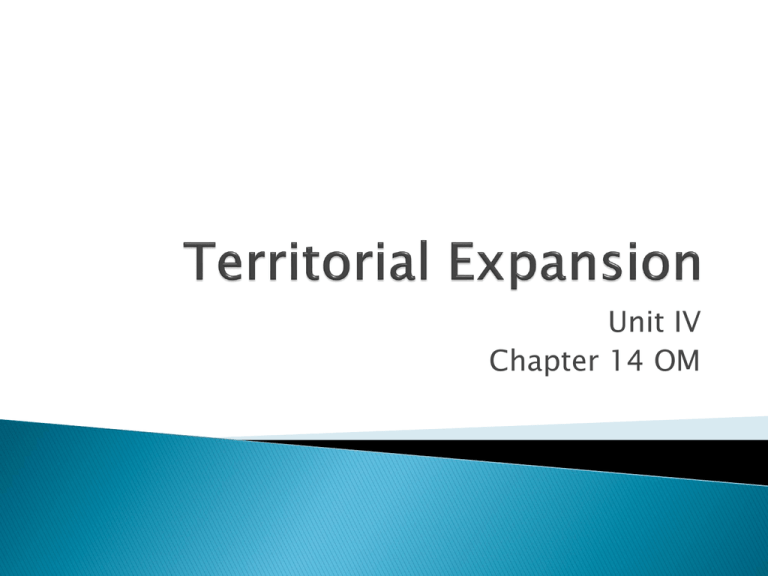
Unit IV Chapter 14 OM What comes to mind when you think of the “Old West?” American Progress by John Gast, mid 19th century By 1840 a majority of the population of the United States lived WEST of the Appalachian Mountains. Made possible by the Market Revolution. Cottage Industry Factories Transportation Revolution ◦ Roads ◦ Canals ◦ Railroads Communication Expansion of trade, industry, territory, etc. was a source of pride for Americans. A catalyst for western expansion Challenge the British for dominance Beyond the Great Lakes Rendezvous System Short-lived industry Why? Government funded ◦ Lewis & Clark expedition ◦ Zebulon Pike’s expedition to the Rockies Stephen Long’s mapping expedition of Great Plains John C. Fremont’s mapping of Overland Trails John Wesley Powell’s Grand Canyon surveys Survey system (Land Ordinance of 1785) Land giveaways Indian Removal expense See map in OM p. 460 and 461. Frederick Jackson Turner – “Frontier Thesis” Have Americans been shaped into adventurous, optimistic, and democratic people because of their frontier experience? John O’Sullivan, 1845 Democratic party newspaper, Democratic Review, editor. “…our manifest destiny to overspread the continent allotted by Providence for the free development of our yearly multiplying millions.” Inevitable Ordained by God Sense of entitlement Trade with Asia – need access to Pacific More space would solve economic problems More space would solve social problems More cotton land Other reasons? 2000 miles, seven months Wagon Trains Deaths due to drowning, disease, starvation, dehydration, accidents Donner Party Sager children Motives for moving? (Push/Pull factors) ◦ Economic opportunity ◦ Healthy surroundings ◦ Adventure, experience the unknown Territory disputed by U.S. and Britain Missionary settlers Nice climate Fur trappers Mid-west farmers – “Oregon Fever” James K. Polk, Fiftyfour Forty or Fight Oregon Treaty – 49th Parallel Mexican Territory Attracted by trade and profits Santa Fe Trail protected by the U.S. government Settlements & trading posts develop along the trail. Main settlements: Nacogdoches, Goliad, San Antonio Buffer between Mexico and the Comanches & Apaches Tejanos Moses Austin -> Stephen F. Austin ◦ Land grant ◦ 300 families - empresarios ◦ Become Mexican citizens, become Catholic Colorado & Brazos River Valleys Sabine River Area Constitution of 1824 Mexico changes its government in 1828 and tosses the Constitution of 1824. Texians are outraged. New settlers are anti-Mexican and refuse to assimilate. Gonzales Alamo Washington-on-the-Brazos (Independence) Alamo Goliad San Jacinto Gonzales Alamo Washington-on-the-Brazos (Independence) Alamo Goliad San Jacinto Republic of Texas Continued problems with Mexico 1837 – rejected Slave state Polk elected 1844 Annexation of Texas 1845 “This claim of President Polk’s (that Mexico had invaded U.S. territory and shed American blood) was…contrary to fact. Congress declared war. Division in the country over the war. Read Thomas Corwin “Against the Mexican War” APPARTS $10,000,000 for a southern trans-continental railroad route
